Top 25 Most Popular Foods in Jordan

Jordanians love each other and show appreciation to visitors with food, this is the conclusion you arrive to after couple of weeks in Jordan. The extra weight you gained in Jordan is just an incentive to come back and visit again.
Perhaps with a plan B next time where you diet for couple of weeks before your visit; this way you’ll get to reward yourself, coming back to a hospitable country where love is shown via food.
Jordanian Coffee
During a simple visit to a Jordanian house outside of lunch time, there would be a certain order of the drinks and foods served to you.
You would start with the Jordanian coffee, then move to cold fruit drinks, especially in summer. This would be followed by cakes, cookies, or nuts served with tea. If you’re enjoying your visit and staying for a longer time than what you initially planned, more dishes will be coming your way, like fresh seasonal fruits, or dried fruits.
Turkish coffee with assorted chocolates are usually served at the end of the visit but it’s not a rule.
Taboon Bread

Jordanians are very fond of bread! I personally consider it a comfort food and eating it in any shape satisfies my soul. Quite often, Jordanians will start eating the warm bread they just bought from the bakery while stuck in a traffic jam!
Trying a Jordanian meal is a rich experience!
Buckle up and let me take you on a mouth-watering journey through 100 years of Jordanian cuisine, where lamb stars in almost every dish and rice is the king of the table; no meal is complete without meat and rice.
1. Mansaf (The National Dish)

The original version of this rich dish involved simply bread and lamb with a yogurt sauce. But Jordanians kept changing it, first by adding groats, then replacing groats with rice. The rice version of mansaf has been the most common dish for the past 50 years.
The yogurt sauce is mainly made of jameed (hard, salty, dry yogurt) with big cuts of lamb. The meat is first boiled til it is half cooked, and then it continues to cook in the yogurt sauce.
The dish is put together on a big serving tray. First a shrak bread (very thin bread) covered with rice and then meat. This is sprinkled with fried almonds and pine nuts and the whole tray is then covered with another shrak bread, which is removed once the dish is served.
Mansaf is Jordan’s national dish, and it’s traditionally eaten by hand from the tray. Using dishes and spoons is ok, but men in particular prefer eating it with their hands.
2. Maglubah

This literally means upside down. It’s not uncommon for my foreign friends to contact me once they leave Jordan to ask for maglubah recipes, especially the one they had at my house.
This healthy meal consists of layers of rice, chicken, potato, eggplant, and cauliflower. Once cooked, you put a tray on the pot and flip it upside down, hence the name, maglubah. The final result looks like a well-made cake, and is eaten with some cold yogurt or green salad.
Another version of maglubah includes rice, chicken, and fresh broad beans. Some even prefer maglubah with lamb instead of chicken.
3. Mah’shi (Stuffed Grape Vines)

Dolma, as the world knows it, is simply called mah’shi in Jordan.
Mah’shi literally means stuffed, whether stuffed vine leaves, zucchini, eggplants, sweet pepper, squash, you name it! Unlike dolma, which in the Balkans consists of more meat than rice, the Jordanian filling is usually 75% rice and 25% meat. Mah’shi is served hot.
Yalanji

- There is a vegetarian version of mah’shi called yalanji, where vine leaves are stuffed with rice and vegetables. Slices of potato are cooked in the same pot. The meal is mostly served cold as an appetizer.
Malfoof

- Malfoof is also a famous version of mah’shi in Jordan. Its literal meaning is cabbage and it consists of stuffed cabbage leaves. This is also served hot.
4. Shawarma

This street food is famous not only in Jordan but throughout the Middle East and Turkey. Shawarma also led to the creation of the famous Mexican dish tacos al pastor, when it was brought to Mexico by Lebanese immigrants. The big shawarma skewer is covered with either lamb or chicken.
The experience of having your first shawarma sandwich is unforgettable, and it becomes addictive over time. The thin cuts of meat or chicken mixed with pickled vegetables, mostly cucumbers, and sauces, especially tahini sauce, make this wrap the perfect choice any time of the day!

A less famous sandwich in Jordan is called a’rayes, which literally means brides. A’rayes consists of pita bread filled with well-seasoned minced meat with tomatoes and onions. It’s either baked in the oven or grilled over coals.
5. Falafel
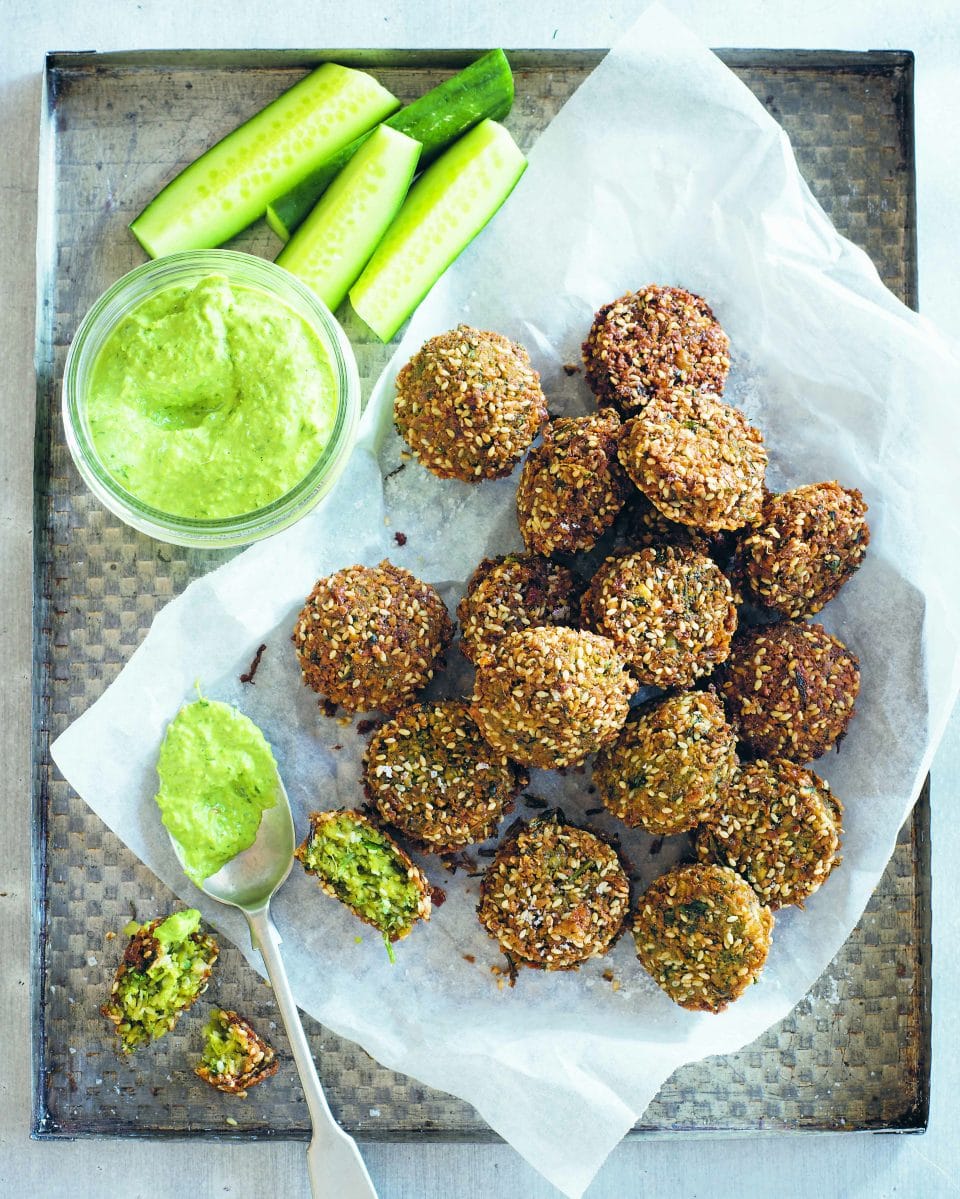
Falafel is a very popular street food in Jordan and could be eaten as breakfast, lunch, or dinner, but most people prefer it as part of their breakfast. Not only is it cheap, but also very nutritious as it’s prepared of ground chickpeas and it’s deep fried.
It’s usually served with one or more of these delicious dips: hummus “chickpeas”, foul “fava beans” and Mutabbal “eggplant”, also known worldwide as “Baba Ghannouj”.
Jordanian Breakfast

Sometimes Jordanians go for a whole meal in the morning, particularly at weekends. Then, some or all of the following dishes accompany the falafel and dips:
- Olives (green or black).
- Labaneh (hard balls of yoghurt in olive oil).
- Nabulsi or Akkawi cheeses (white cheeses originating from two Palestinian cities, Nablus and Akka. They are made of cow, sheep, or goat’s milk).
- Fried eggs prepared in ghee or olive oil, or boiled eggs.
- Olive oil and zaátar dip, which is basically ground and dried thyme.
- Gallayeh (the literal meaning is pan and refers to fried tomatoes prepared in a pan).
- Halaweh tahinieh (or what’s known worldwide as tahini halwa, which is prepared with sesame seed paste and served with ghee or butter.
- Sliced cucumbers and tomatoes.
- Magdous (small eggplants stuffed with walnuts, garlic, chili pepper, and steeped in olive oil).
6. Mujaddarah

This vegetarian dish consists of lentils, with either groats or rice, and fried onions sprinkled on top. It’s usually served with green salad or yoghurt with pickled cucumbers and olives on the side.
7. Bamia, Fasolia Khadra, Fasolia Baida

“Bamia,” which means okra, “Fasolia Khadra,” which means green beans, and “Fasolia Baida,” which means navy beans, are vegetables that are either cooked fresh in their seasons or kept frozen to be available all year long for Jordanians to enjoy.
These vegetable stews are cooked with a basic tomato sauce and meat: some prefer them with chicken. They are either served with rice prepared with noodles or just rice.
Another way to prepare these vegetables is cooking them with tomato and olive oil in a pan. This vegetarian version, which is known as mhalwas, especially if made with okra, is usually eaten with pita or taboon bread. Okra is also fried when in season and eaten with sumac.
8. Musakhan

Musakhan, which Palestinians brought to Jordan, is one of the most popular foods in the country and is considered the national dish of Palestine.
Its two basic ingredients are chicken roasted with onions and sumac and taboon bread. The chicken is served over the bread and the meal is eaten using your hands.
Extra-virgin olive oil and sumac are the two main ingredients that give this fine meal its unique taste. Musakhan is also prepared in rolls for easier eating.
9. Green Salad and Tabbouleh

The main and easily-prepared salad in Jordan is green salad. It consists of cucumber, tomato, green pepper, parsley and lettuce. All must be chopped and dressed with olive oil, lemon juice, and dried mint. Some add chopped onions as well.
Fattoush

During the month of fasting, Ramadan, this fresh salad is eaten daily but with a little twist. Baked or fried pieces of pita bread are added creating fattoush.
Tabbouleh

Another type of side dish is tabbouleh, a fine green salad that is very popular, especially with mah’shi and kubbah. The difference between the two salads is that, unlike the green salad, groats are added to tabbouleh after it has been soaked in lemon juice for a while. The lettuce leaves are served whole on the side whereas they are mixed into the green salad.
Older Jordanians prefer to eat tabbouleh by hand, topping it onto small fresh lettuce or vine leaves.
10. Manakish, Mo’ajjanat and Sambosa

PPronounced locally as “Manageesh”, they are round baked pastries topped with thyme. They are very popular as breakfast and are consumed with red tea.
Mo’ajjanat

While the dough is the same as that used for manakish, it is topped or stuffed with a local cheese, such as nabulsi, or imported ones, such as kashkaval (cheddar). These are known as mo’ajjanat, which are basically oven-baked pies.
Sambosa

A famous variant of pie eaten daily in the month of Ramadan is known locally as sambosa.
These triangular-shaped pies are stuffed with meat, cheese, or vegetables. They are either baked or fried and are considered very important in Ramadan cuisine. Most Jordanians, if not all, use ready-made sambosa dough, which is available throughout the country.
11. Mulukhiyah
This meal consists of green sauce, prepared from finely chopped mulukhiyah leaves cooked with chicken. It’s served with white rice and lemons cut in half and placed on the side for you to add a squeeze of fresh lemon to your plate.

Photo Credit: Madwoo
The second version of this meal, which is loved by many Jordanians, is mulukhiyah whole leaves. This is cooked with boneless chicken or small chunks of veal and eaten with bread. What gives mulukhiyah its distinct taste is the chopped garlic and coriander.
Khubeizeh

Another popular meal consists of a close relative to mulukhiyah, mallow. Known in Arabic as khubeizeh, this wild plant makes a fine vegetarian meal. The mallow is sautéed with chopped onions and eaten with bread.
Akkoub

Finally, we come to gundelia, known locally as akkoub.
Although it’s craved by many, this plant needs a lot of work to make it edible. The thorns of wild gundelia must first be removed, then it is sautéed with chopped onions. It can be eaten alone or with eggs. Like khubeizeh and mulukhiyah, akkoub is eaten with bread.
12. Kuftah and Kabab:
Kuftah

- Kuftah is prepared with minced lamb or veal, or a mixture of the two.
The meat is mixed with onions, parsley, and herbs, then flattened in a tray and baked in the oven. Kuftah is either made with sliced tomatoes or with sliced potatoes and covered with tahini sauce.
Kabab (Kebabs)
- Kabab consists of ground meat with vegetables, particularly onions, and typically cooked on a skewer over coals or baked in the oven. Most people prefer to have it with bread, others like it with tomato sauce and rice.
13. Freekeh

Freekeh is durum wheat that is roasted and rubbed. It’s prepared with olive oil and served with chicken or small chunks of veal.
14. Shorbet Adas, Rashuf, and Shorbet Freekeh:
Shorbet Adas

When Jordanians expect cold weather, they prepare the famous lentil soup. Carrots are usually added, giving this soup its light color. It is served with small roasted or fried pieces of bread.
Rashuf

Rashuf got its name from the verb sip, in Arabic Rashaf. It’s a Bedouin soup and popular in the southern part of the country. Rashuf is prepared with coarse wheat flour, yogurt, and lentils.
Freekeh Soup
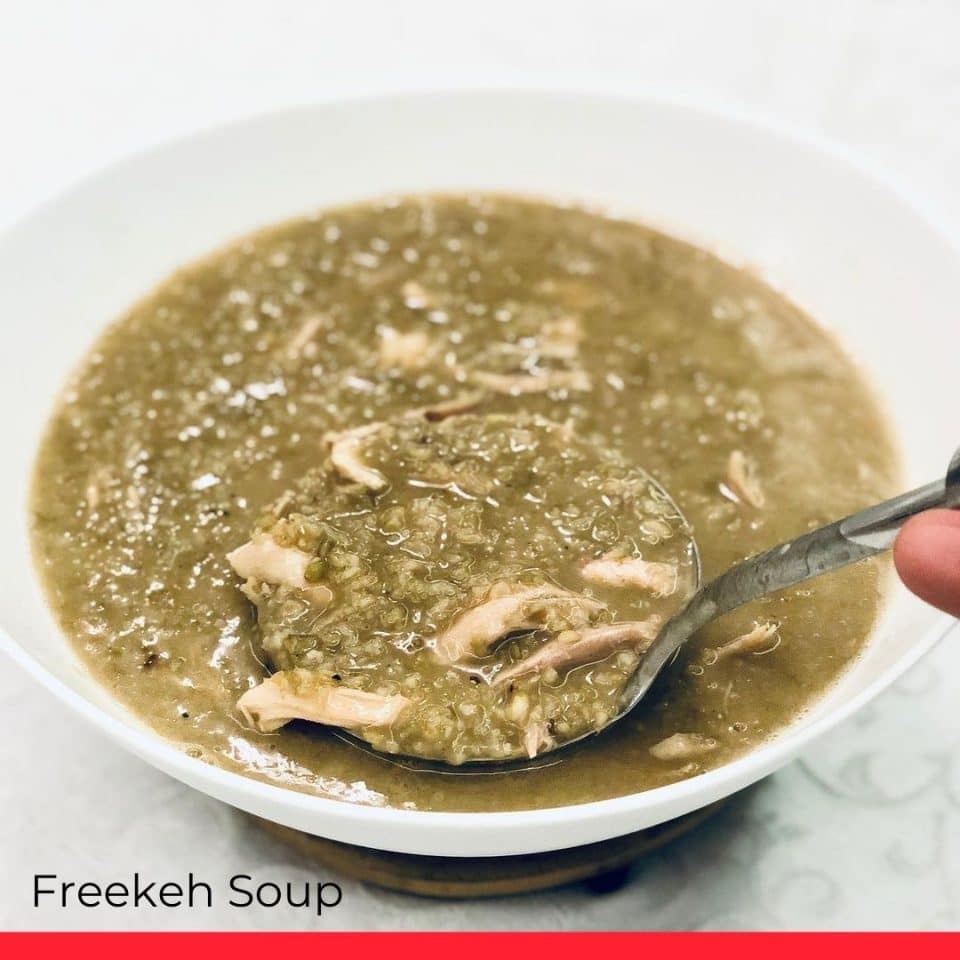
Another popular dish made of durum wheat is freekeh soup, which is very popular in winter. This rich soup is usually prepared with tomato and cooked with lamb chops or ribs.
15. Kubbah

Kibbeh, as the Lebanese call it, is considered a side dish, but it isn’t easy to prepare. A paste is made by pounding groats and meat, then it’s shaped into hollow balls and filled with minced meat and pine nuts. Kubbah balls are deep fried.
Steamed kubbah is another popular dish in the northern part of Jordan. This version is made in one paste, mixing the pounded groats and meat, then forming it into balls and finally steaming them.
16. Zarb (Bedouin Cuisine)

Fancy a night with Bedouins in Wadi Rum?
A meal of zarb will definitely be part of the package! A mix of lamb and chicken, rice, carrots, onions, and potatoes is placed in a hole in the ground, which is filled with flaming hot coals.
It’s a dish that Jordanians look out for when they visit the southern part of Jordan, and it’s usually followed by Bedouin tea, which is brewed over the coals.
17. Makmorah
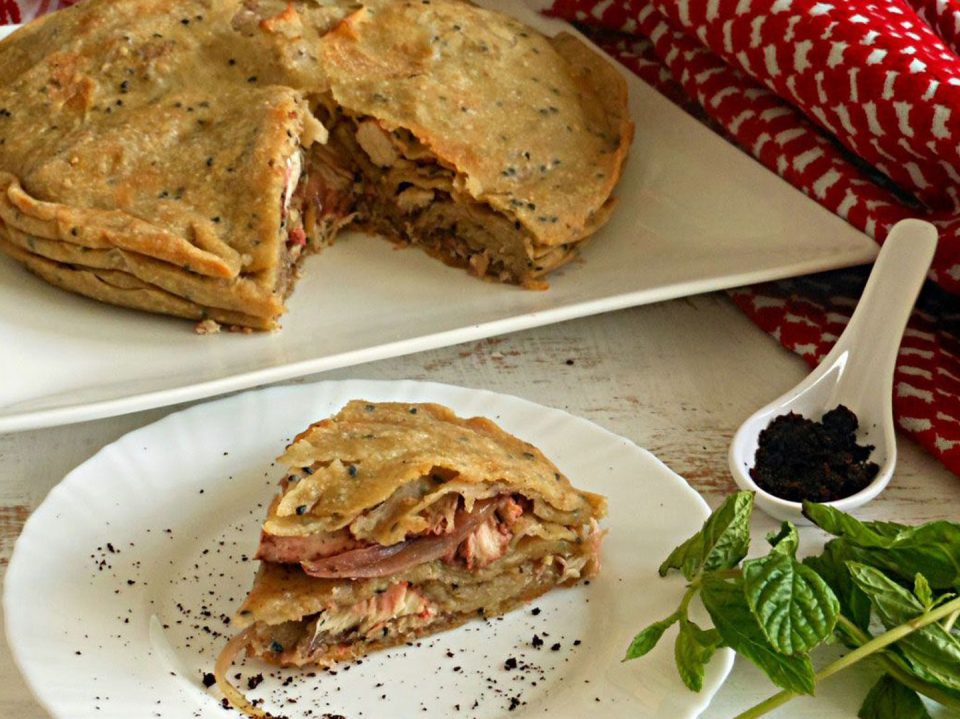
Heading up north, makmorah, which means buried, is a pie that is very popular with farmers and villagers, especially during the olive picking season from October to November.
This pie is prepared with thin layers of dough, chicken, or other meat, and cooked with onions in fresh-pressed olive oil. Finally, it’s covered with aluminum foil and baked in the oven. It was given its name due to its ingredients being buried between layers of dough.
18. Kabsih (Spicy Rice Dishes)
Kabsih
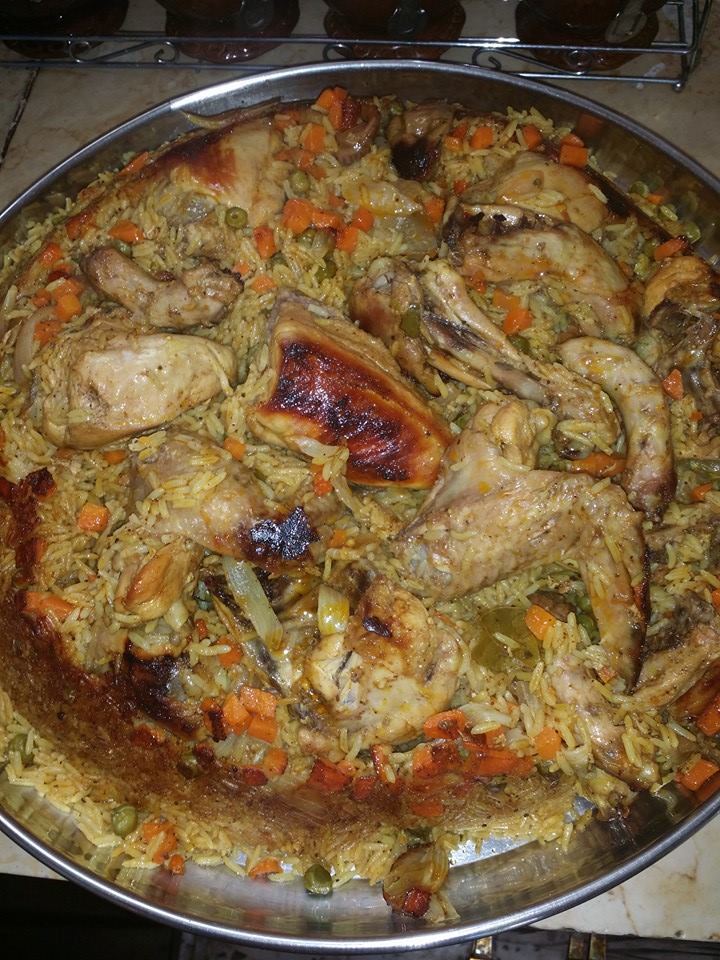
Kabsih is a very common dish in the Golf countries, and it’s considered the national dish of Saudi Arabia. It is a very spice-filled meal that quickly became a favorite on Jordanian dining tables and is deeply rooted in Jordanian cuisine.
The Jordanian version of kabsih is made with tomato sauce with mushrooms and carrots, and prepared with lamb or roast chicken. The special flavor of kabsih comes from the addition of galangal root and black lime.
Ouzi
Ouzi: another rich spicy meal, from the same family of kabsih, is ouzi rice. What’s not to like about rice cooked with carrots, peas, and minced meat?
Sayyadieh

Sayyadieh is the only rice meal with fish that is popular among Jordanians, especially in the city of Aqaba on the Red Sea. Just like kabsih and ouzi, many spices are used in sayyadieh, but cumin is what really gives this meal its special taste. It can be made with a variety of fish.
Kabsih and her two sisters, ouzi and sayyadieh, are covered with fried almonds and pine nuts when served. Nowadays, many people also add fried cashews.
19. Seneyyeh (Baked Chicken or Meat Trays):

Seneyyeh means tray and it refers to any oven-baked chicken or meat on a tray. Sliced vegetables, such as onions, sweet peppers, and potatoes, are added to the tray.
This is considered by many, especially working moms, an easy meal to prepare beforehand and keep in the fridge until it’s baked, right before lunch time. It’s served with either rice or bread and eaten mostly with a salad or cold yoghurt.
20. Mi’elag and Traf (Eid Al-Adha Cuisine)
Mi’elag

Mi’elag is a meal made with offal. The kidney, spleen, heart, and liver are pressure-cooked the morning of Eid and served for breakfast or brunch. Small cuts of lamb or beef can also be pressure-cooked and served.
This unusual breakfast, which is considered light on the stomach, is consumed during the Feast of the Sacrifice or what’s known locally as Eid Al-Adha, which follows the pilgrimage season.
Jordanians wake up early on the days of Eid and choose a day to sacrifice a sheep or cow, or both for those who can afford it. They work hard cutting the meat and give a third of it to the poor, a third to their friends and relatives, and keep the last third for themselves.
After such tiring manual work, a good meal is welcome and gives them extra strength to go on with the day.
Traf

Traf, which refers to the animal’s front and back legs, is the name given to the meal in which not only the lamb’s front and back legs are cooked but also the stomach, intestines, and head.
This dish usually follows the season of Eid Al-Adha and is considered a not-so-easy recipe to prepare. It is usually cooked by Jordanians who got the recipe from their mothers. Although it’s a seasonal dish, it’s popular with Jordanians year-round.
21. Fatteh
Fatteh is basically any food that consists of bread topped with strained yogurt then covered with chickpeas and pine nuts. Nowadays, many Jordanians prefer to add minced meat on top, along with the chickpeas. This meal is served any time of the day!
The most famous fatteh in Jordan is the chickpea fatteh, fattet hummus, followed by chicken fatteh, fattet jaj, then eggplant fatteh, fattet beitinjan.
Desserts
22. Knafeh

There are many versions of knafeh, but the best is the authentic recipe from the city of Nablus in Palestine.
It’s made of two layers: a cheese layer then a shredded filo pastry layer on top. Knafeh topping is always colored orange. This cheesy dessert is served and eaten hot! No Jordanian celebration is complete without it.
23. Qatayef, Maámoul, Ghreybeh: (Ramadan and Eid Cuisine)
Qatayef is the main dessert that follows breakfast during Ramadan, the month of fasting. It consists of a round dough filled with either cheese, walnuts, or heavy cream. It’s deep fried or baked, then immediately soaked with syrup while still hot.
Qatayef Asafiri
Some Jordanians prefer the smaller-size qatayef, filled with heavy cream and dipped in a little pistachio. No frying or baking is needed, so it’s served cold. These are called qatayef asafiri.
The process of making qatayef
Maámoul

Maámoul is basically an oven-baked stuffed cookie prepared for serving during the Days of Eid with Jordanian coffee.
The dough is made of semolina or flour, or a mix of both, and filled with either date paste, walnuts, or pistachios. I’ve also tried maámoul filled with cashews, hazelnuts, or peanuts, but these stuffings aren’t as popular in Jordan.
Ghreybeh

Ghreybeh is a baked biscuit made with flour, sugar, and ghee. It’s served with maámoul during Eid.
24. Baklawah (Baklava) and Kullaj:
Baklawah

Pronounced locally as baklawah, this fine dessert, originally Turkish, is loved by Jordanians and they typically prefer to buy it rather than make it at home. It takes patience to prepare, as it consists of thin layers of filo pastry stuffed with chopped nuts. It’s baked and sweetened with syrup.
The original version of Jordanian baklawah was stuffed with walnuts, but, nowadays, the most popular baklawah is stuffed with pistachios.
Kullaj

Kullaj is a Palestinian dessert that is very popular in Jordan. It consists of a flour dough stuffed with heavy cream, white cheese or walnuts, and is deep-fried. It’s usually sweetened with sugar syrup mixed with rose water.
25. Haresih and Zalabia
Haresih

Haresih is made of semolina batter, flattened in a tray, and baked in the oven. It’s sweetened with syrup while still hot, and can be served hot or cold.
Zalabia

Zalabia is basically a yeast dough shaped like round bread and deep fried. This simple dessert, which is very popular among villagers and farmers in the northern part of the country, is usually served with dips on the side, such as honey or grape molasses. Some Jordanians prefer to sprinkle it with little sugar while still hot and eat it plain.
Related: Most Popular Palestinian Foods
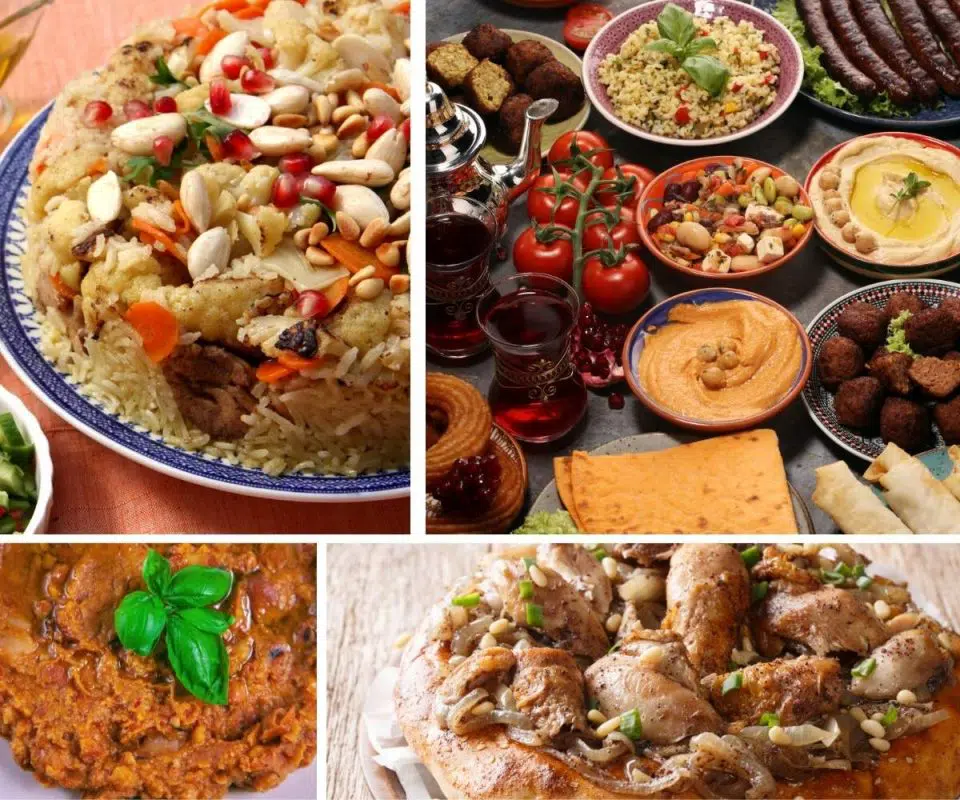


Literally in love with jordanian food 😍